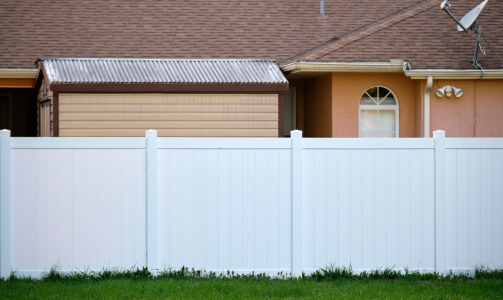The Shocking Truth About Shared Fences - Who Really Foots the Bill?
By
- Replies 7
When it comes to the fences that mark the boundaries between our homes, the question of who pays for their upkeep can be a source of tension between even the friendliest of neighbours. The state of a shared fence can often reflect the state of neighbourly relations, and when a fence starts to lean, rot, or fall apart, it's not just the timber that's under stress but also the goodwill between those who share its length.
The Shocking Truth About Shared Fences - Who Really Foots the Bill?
In the land down under, where the great Australian dream often includes a home with a backyard, the fence that separates your slice of paradise from your neighbour's is more than just a boundary. It's a symbol of mutual respect and privacy. But when that fence needs attention, the question arises: who is responsible for the costs of building, repairing, or replacing it?
Amanda Farmer, a property lawyer based in Sydney/Gadigal country, sheds light on this common conundrum. 'Disputes definitely come up around the cost of the fence, how much and how that will be shared,' she explains. The issues can range from the location and condition of the fence to its appearance and height.
The legal landscape of shared fences
The law is a good starting point for understanding your obligations and rights regarding shared fences. According to legislation, a dividing fence should be 'sufficient', but this doesn't mean it has to be the most expensive or elaborate option available. When determining what is sufficient, several factors come into play, including the existing fence type, the properties' usage (commercial or residential), the local area's standard, and any heritage or council requirements.
However, the law also allows for flexibility. While neighbours typically split the cost of a shared fence, it doesn't have to be an equal split. If one neighbour desires a more expensive or elaborate fence, they can agree to pay a larger share. Conversely, if one party has caused damage to the fence through carelessness or recklessness, they may be solely responsible for the repair costs.
Navigating neighbour negotiations
The art of negotiation is key when dealing with shared fences. If you have a good relationship with your neighbour, a friendly conversation might be all it takes to reach an agreement. Legal Aid NSW suggests that if face-to-face discussions are challenging, a phone call or a letter could be effective alternatives.
When neighbours agree, they can formalise the arrangement in writing. This agreement can be enforced if one party fails to uphold their end of the deal. But what happens when an agreement can't be reached?
In such cases, the recommended course of action is to follow the steps outlined in your state or territory's dividing fences legislation. This usually involves sending a formal notice to your neighbour detailing the work, estimated costs, and a request for their contribution. If there's no response or an agreement can't be made, legal proceedings or mediation may be the next step.
A word of caution: don't go ahead with the work, assuming your neighbour will be forced to pay later. The law doesn't work that way, and you could end up footing the entire bill.
The moral of the story
The shocking truth about shared fences is that while they may physically divide properties, they shouldn't divide neighbours. Communication, understanding, and a bit of give-and-take are essential to maintaining both the fence and the relationship.
Before you find yourself in a fencing feud, consider seeking independent legal advice tailored to your situation. And remember, a good fence is said to make good neighbours, but a good conversation can make an even better one.
 So, dear members of the Seniors Discount Club, have you had any experiences with shared fences? How did you handle the situation, and what advice would you give to others facing similar issues? Share your stories and wisdom in the comments below – your insights could help build bridges (or fences) in our community!
So, dear members of the Seniors Discount Club, have you had any experiences with shared fences? How did you handle the situation, and what advice would you give to others facing similar issues? Share your stories and wisdom in the comments below – your insights could help build bridges (or fences) in our community!
The Shocking Truth About Shared Fences - Who Really Foots the Bill?
In the land down under, where the great Australian dream often includes a home with a backyard, the fence that separates your slice of paradise from your neighbour's is more than just a boundary. It's a symbol of mutual respect and privacy. But when that fence needs attention, the question arises: who is responsible for the costs of building, repairing, or replacing it?
Amanda Farmer, a property lawyer based in Sydney/Gadigal country, sheds light on this common conundrum. 'Disputes definitely come up around the cost of the fence, how much and how that will be shared,' she explains. The issues can range from the location and condition of the fence to its appearance and height.
The legal landscape of shared fences
The law is a good starting point for understanding your obligations and rights regarding shared fences. According to legislation, a dividing fence should be 'sufficient', but this doesn't mean it has to be the most expensive or elaborate option available. When determining what is sufficient, several factors come into play, including the existing fence type, the properties' usage (commercial or residential), the local area's standard, and any heritage or council requirements.
However, the law also allows for flexibility. While neighbours typically split the cost of a shared fence, it doesn't have to be an equal split. If one neighbour desires a more expensive or elaborate fence, they can agree to pay a larger share. Conversely, if one party has caused damage to the fence through carelessness or recklessness, they may be solely responsible for the repair costs.
Navigating neighbour negotiations
The art of negotiation is key when dealing with shared fences. If you have a good relationship with your neighbour, a friendly conversation might be all it takes to reach an agreement. Legal Aid NSW suggests that if face-to-face discussions are challenging, a phone call or a letter could be effective alternatives.
When neighbours agree, they can formalise the arrangement in writing. This agreement can be enforced if one party fails to uphold their end of the deal. But what happens when an agreement can't be reached?
In such cases, the recommended course of action is to follow the steps outlined in your state or territory's dividing fences legislation. This usually involves sending a formal notice to your neighbour detailing the work, estimated costs, and a request for their contribution. If there's no response or an agreement can't be made, legal proceedings or mediation may be the next step.
A word of caution: don't go ahead with the work, assuming your neighbour will be forced to pay later. The law doesn't work that way, and you could end up footing the entire bill.
The moral of the story
The shocking truth about shared fences is that while they may physically divide properties, they shouldn't divide neighbours. Communication, understanding, and a bit of give-and-take are essential to maintaining both the fence and the relationship.
Before you find yourself in a fencing feud, consider seeking independent legal advice tailored to your situation. And remember, a good fence is said to make good neighbours, but a good conversation can make an even better one.
Key Takeaways
- Generally, neighbours should split the cost of building, repairing, or replacing a shared fence, but the split doesn't have to be equal, especially if one party desires more expensive or extensive work.
- There can be instances where the cost of fence repairs or replacement falls solely on one party, particularly if they’ve been responsible for the damage.
- The law requires a dividing fence to be 'sufficient', taking into account factors such as current fencing, property usage, local area norms, and any heritage or council requirements.
- If neighbours cannot reach an agreement, they should follow the dividing fences legislation of their state or territory, potentially involving formal notices, mediation, or legal proceedings, rather than proceeding with work and expecting reimbursement.








